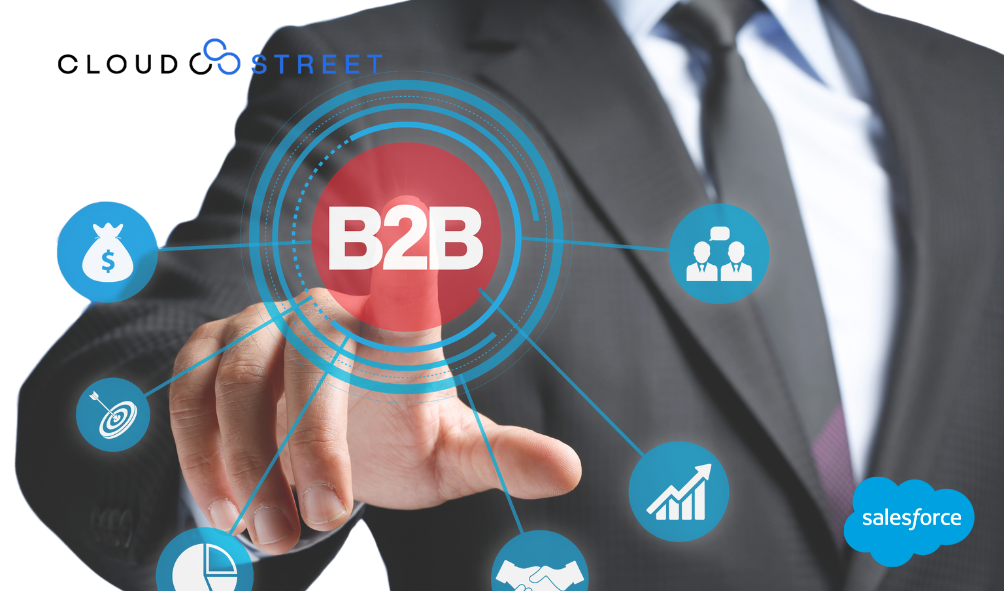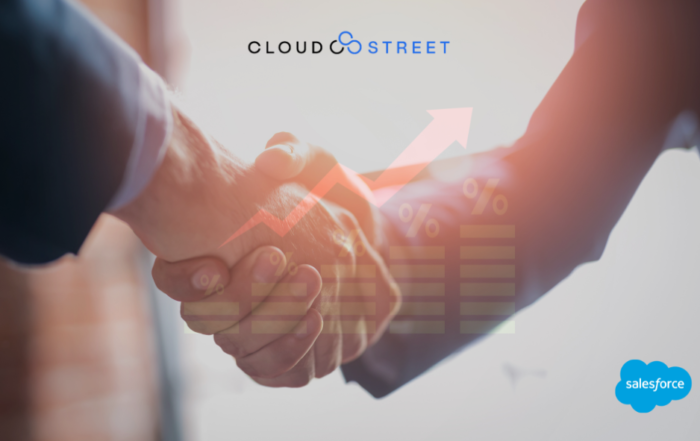
Business-to-business (B2B) sales arise when a company sells products or services to another company. The sales cycle may be lengthy and include giving presentations and demonstrations to large groups. This may involve many people, from potential users to final decision-makers.
After considerable effort and perhaps intense negotiations, you either close the deal or not. The key to your success is to accelerate your B2B sales process in ways that enhance your return on investment (ROI). The longer it takes to get to the close, the lower the ROI results, even when you make the sale.
By implementing Salesforce strategies through the accelerator programs offered by Cloudstreet Services, you can get your company up-to-speed using cloud services and optimize your Salesforce capabilities to make B2B sales fast. You can capture new buyers and increase sales to existing buyers when they use their customized web portal to buy from your company.
Here are some tips on 1) how to manage B2B sales utilizing the best practices, 2) what key performance indicators you should measure, and 3) what B2B tools to use, including how to make use of cloud services and ways to use artificial intelligence (AI).
Characteristics of B2B sales
Knowing the characteristics of your B2B sales helps fine-tune your strategy. Here are some things you need to manage and a few pitfalls to watch for and avoid.
Various Stakeholders
You may find that various stakeholders have different agendas and requirements that need to be satisfied. You would do well to clearly understand the decision-making process and determine who the ultimate final decision-maker(s) will be. There is no point in making a sales pitch unless the persons who can ultimately decide are included in the process.
High-Value Sales and Recurring Revenues
A single B2B sale may be worth millions of dollars. Businesses tend to invest in these services for longer times because of the cost of implementation and change management needed to switch providers.
Closing Takes Time
Complex B2B sales take longer to close. Effectively using Salesforce accelerators, you can automate processes for efficiency, such as having customized web portals for repeat customers, so you can concentrate on where you need to apply your powers of persuasion.
Long-Term Relationships
Because the sales are complex, the deal sizes are large, and there are various stakeholders to contend with, B2B buyers want to know their benefits and potential ROI before they make a purchase. Once a customer, it is usually easier to keep them than it is to find a new customer.
B2B Sales Process Best Practices
B2B sales teams reach out to potential customers to find and qualify prospects. Then, the sales team identifies the various stakeholders and participants in the decision-making process. Watch out for hidden stakeholders that a prospect fails to identify. These stakeholders may be hidden final decision-makers who put the kibosh on the deal after all the hard work of making the presentations and getting approvals from other stakeholders is finished. Or there may be a stakeholder that a prospect is not aware of, such as a regulator, who pops up at the final moment to block a deal.
Here are the six steps in the sales process:
- Step One – Lead Generation: Sales teams identify prospects using ads (inbound leads) or by contacting potential customers.
- Step Two – Customer Qualification: Sales teams determine the relevant potential of a prospect to become a customer.
- Step Three – Needs Assessment: Sales teams work with potential customers who qualify to determine their specific needs. Pay careful attention to the customer’s pain points.
- Step Four – Presentation: Sales teams present a customized solution for the client to review. Give a quote. To explain the ROI of the value proposition, focus less on the cost of the solution and more on the cost(s) of not implementing the solution.
- Step Five – Negotiate: Sales teams determine the terms of the deal, using deal sweeteners as needed.
- Step Six – Close: Sales teams finalize the deal and prepare the contracts for signing.
Salesforce organizations can leverage accelerator technology to streamline this six-step process. For example, cloud-based AI tools for deep market analysis can organize information, identify prospects, and track leads as they progress through the sales process.
Key Performance Metrics for B2B Sales
To understand efficiency and its impact on your ROI, it is vital to track key performance indicators (KPIs). This tracking of B2B metrics shows how your company is performing, how a specific sales team is performing, and how an individual sales agent is performing. You can compare performance metrics over time, such as a year-over-year analysis, and determine if some strategic adjustments are needed should you fall short of our goals.
Here are some important KPIs for B2B sales:
- Prospects: The number of new leads (for the company, sales team, or sales rep) over a particular period.
- Conversion Rate: The number of leads that convert to being customers.
- Annual Contract Value (ACV): This is the average sales per customer for a year.
- Annual Recurring Revenue (ARR): The annual contract renewals.
- Customer Lifetime Value (CLV): The predicted value of all revenues received from a customer over the course of their involvement with your company.
How to Improve Your B2B Sales Process
Use cloud-based tools and data available about market trends and customer behavior to refine your sales process.
Here are some tips on how to improve performance:
- Know Your Target Audience: Accurately define the characteristics of your target audience. Most companies create a set of imagined client profiles of what they think are their best customers.
- Lead Priority: Analysis of past sales data allows the system to identify leads with a higher probability of conversion and create an algorithm that helps recognize these characteristics in new prospects. Lead targeting and prioritization help increase sales.
- Personalization: Collecting data allows personalization that goes much further than simply addressing a customer by name in a bulk email. For example, the Cloudstreet Services system helps create a customized, personalized web portal for each repeat customer.
- Sales Forecasts for Planning. Sales data analysis can help create forecasts, which are useful for budgeting, cash flow, and expansion.
B2B Performance Dashboard
Tracking the KPIs and sales analysis metrics is accomplished by using a dashboard that displays all the pertinent information in an easy-to-read fashion that is collected and updated in real-time.
A dashboard displays sales data from previous and current periods for comparison. It keeps a running total of pending sales, so you can make informed decisions and adjust strategies as necessary. This system may be used to drive sales strategies, make decisions about hiring new employees, and deploy marketing campaigns.
Final Thoughts
B2B sales happen when you can identify and engage prospects who need your company’s products or services, and you can close a deal. Understanding your prospect’s pain points and building relationships with the various stakeholders, buyers, and decision-makers is vital.
To succeed, you want to sell solutions to your prospect’s problems and demonstrate a value proposition based on their ROI. Finally, you want to accelerate your process using the cloud-based solutions offered by Cloudstreet Services.
More Case Study
CASE STUDY: Commerce Cloud Subscription Management
CLIENT: Manufacturing Company with Software
CHALLENGE: The manufacturer faced several challenges in offering a [...]


